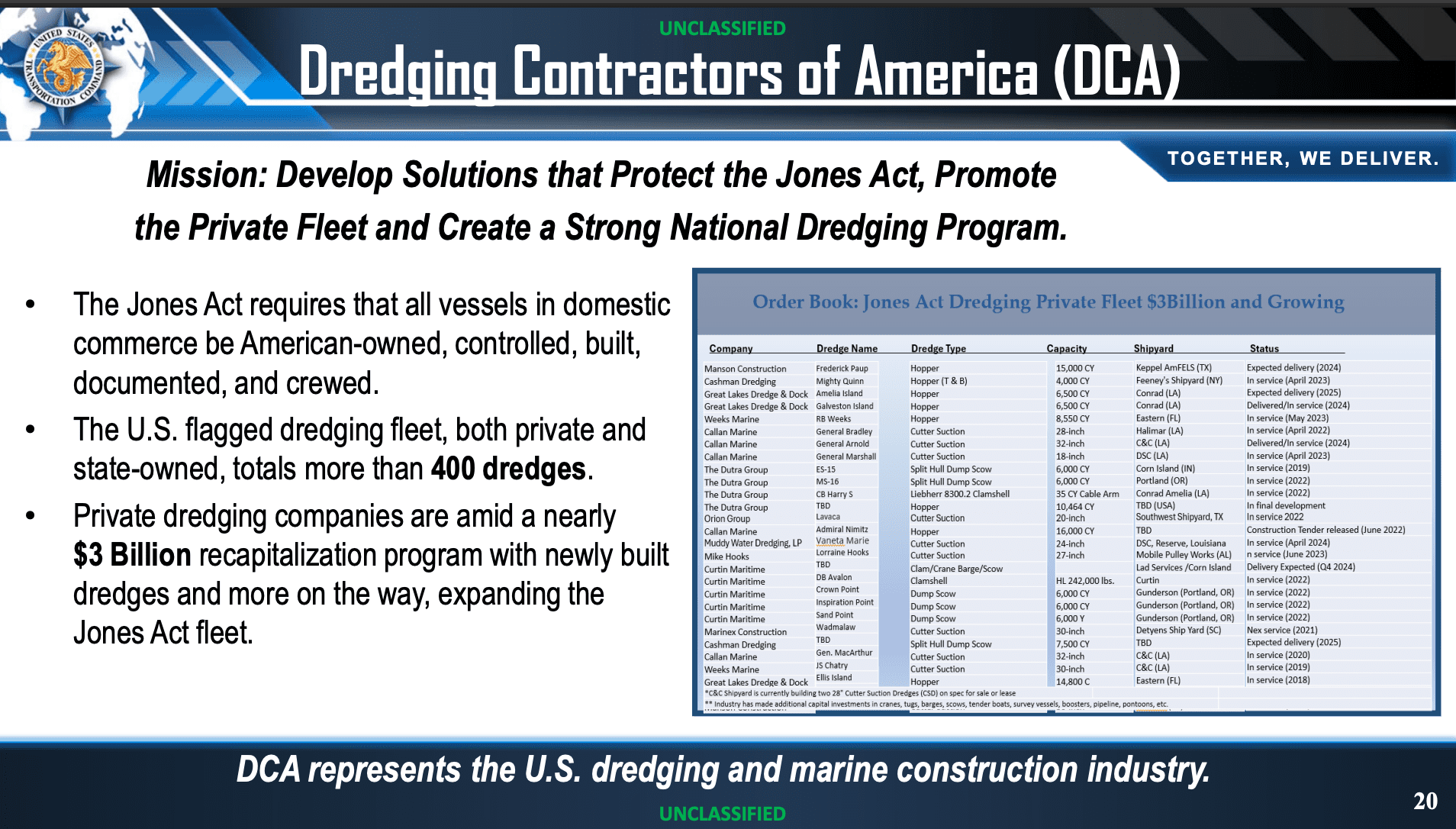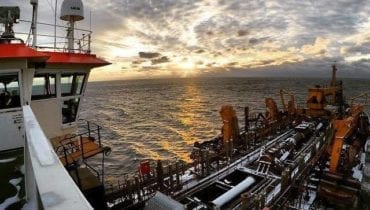The U.S. Senate Committee on Armed Services, through the National Defense Authorization Act (NDAA) for Fiscal Year 2025, tasked the U.S. Transportation Command (USTRANSCOM) with assessing how reduced dredging capacity may have impacted designated strategic seaports. In response, USTRANSCOM submitted a report titled Dredging and the Strategic Seaport Program, which has recently been declassified and made available to the public. The report outlines operational impacts, identifies root causes of dredging challenges, and provides recommendations for prioritizing limited dredging resources.
Contrary to the assumption that Jones Act dredges/ dredging equipment availability is the primary issue, the report clarifies that the real challenges lie elsewhere. Key impediments include:
- Limited disposal areas for dredged material
- Complex permitting processes
- Cost-sharing requirements between federal and non-federal stakeholders and contract constraints.
These findings are supported by data from the U.S. Army Corps of Engineers (USACE), the U.S. Maritime Administration, commercial strategic seaports, and the Dredging Contractors of America.
“This report is soundly written and should serve as an important guide for lawmakers and executive branch officials,” said William P. Doyle, Chief Executive Officer of the Dredging Contractors of America.
“Clearly, we need help—from industry, federal, and state-level stakeholders. All seaports, particularly those on the East Coast, are being strangled by outdated and overly burdensome regulations that restrict the number of days dredging operations can take place. In some mid-South Atlantic regions, we’re limited to just four months per year.”
The report includes case studies from three strategic seaports: Savannah, Georgia; Virginia; and Gulfport, Mississippi.
- Savannah, Georgia: The report highlights ongoing conflicts with environmental work windows, which have complicated the funding and awarding of new contracts. USACE and industry stakeholders are actively collaborating with the National Marine Fisheries Service and the U.S. Fish and Wildlife Service to resolve these issues.
- Virginia: Dredging operations are constrained by limited disposal site capacity, primarily due to ongoing construction at the Craney Island Rehandling Basin and the Norfolk Harbor Deepening and Improvement Project. Capacity is expected to remain restricted until at least 2027. However, USACE has expressed willingness to accommodate critical placement needs, especially those tied to U.S. Navy operations.
- Gulfport, Mississippi: USTRANSCOM reports that while USACE currently has sufficient funding to maintain channel depths of 32–33 feet—adequate for most vessels, including military ships—additional funding and justification are required to deepen the channel to the Strategic Seaport Program’s standard of 35 feet. The Department of Defense has since provided the necessary justification.
The USTRANSCOM report underscores the importance of addressing regulatory, environmental, and funding challenges to ensure the continued operational readiness of strategic U.S. seaports. As these ports are vital to national defense and economic security, a collaborative effort among federal agencies, state governments, and industry stakeholders is essential.
Mr. Doyle concluded, “The findings serve as a call to action for Congress and the executive branch to modernize dredging regulations, streamline permitting, and ensure sufficient resources are allocated for long-term infrastructure resilience.”
The full report can be found here







